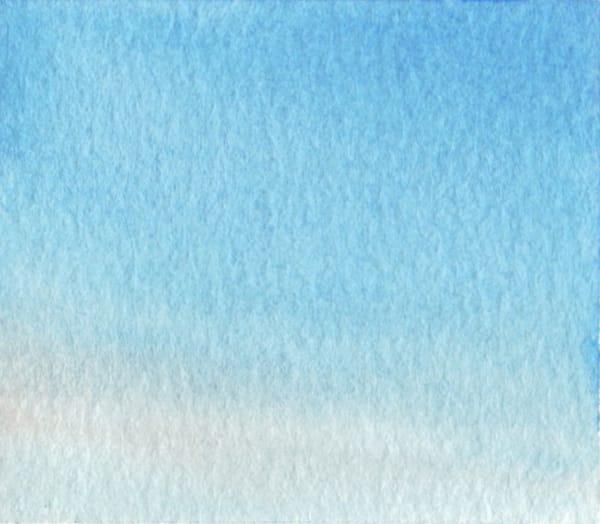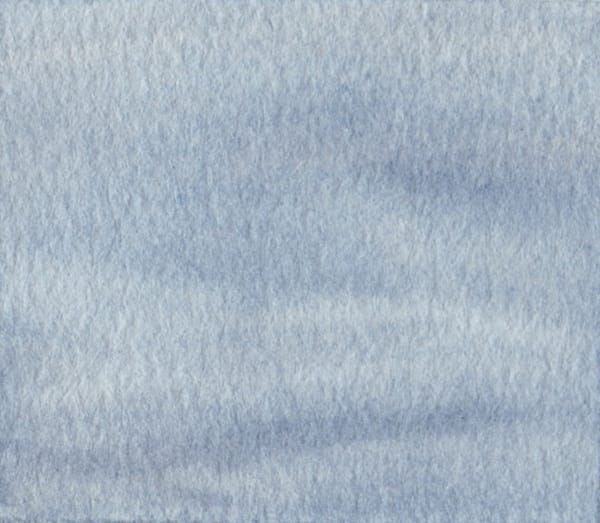Lessons learned from a 30-day nature journaling challenge
Considering a 30-day art challenge? Here are some of my insights after completing Marley Peifer's Wild Wonder nature journaling challenge.
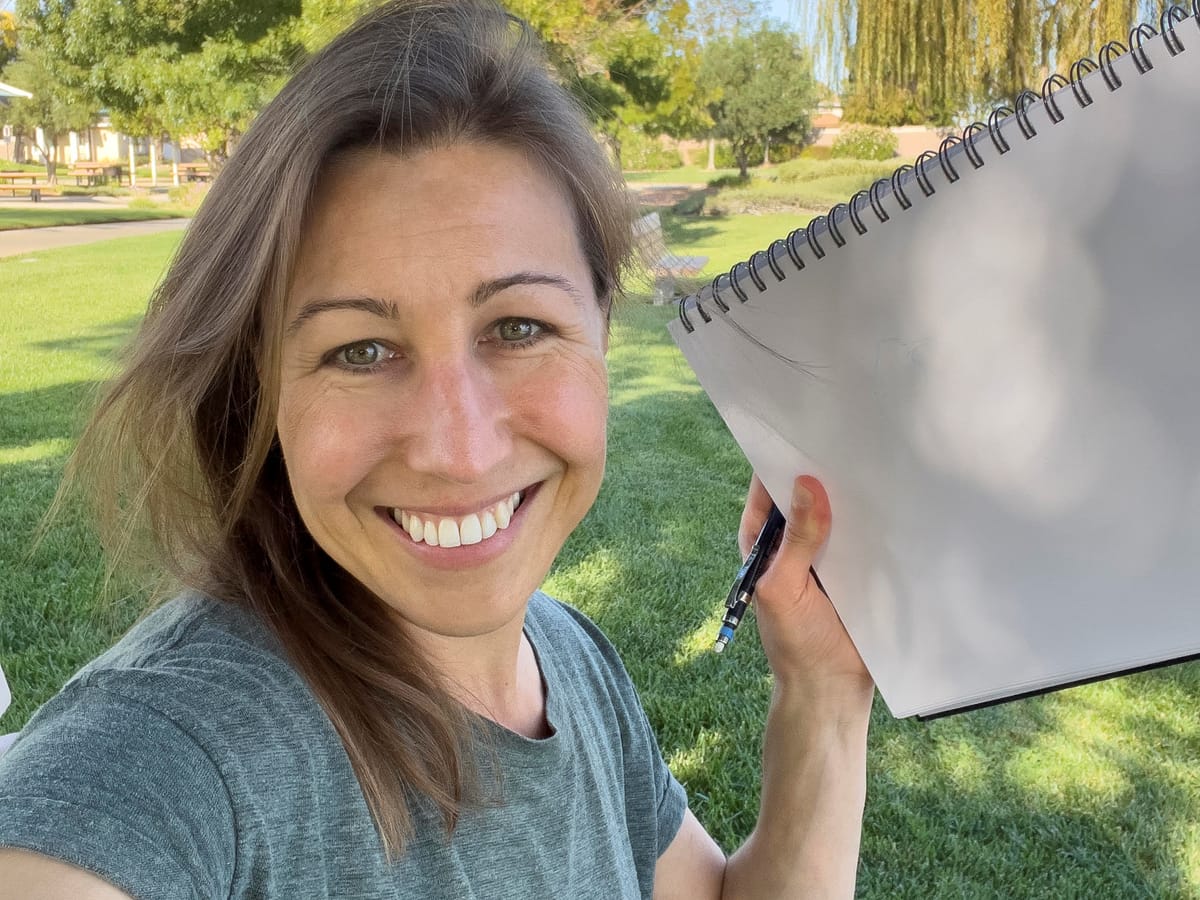
I’m no stranger to 30-day challenges. I’ve used them for trying out a variety of daily habits including learning Spanish (500+ days now with Duolingo 🔥), practicing yoga, mindfulness meditation, journaling, self-guided nature journaling, and much more.
30-day challenges are a staple in helping me test-drive new habits. They give me just enough exposure to explore an activity’s pros and cons, and just enough time to transition said activity into my daily routine when I feel like the activity is beneficial enough to keep it around for the long haul.
It shouldn’t come as much of a surprise, then, that, when I saw nature journaler Marley Peifer’s open call to participate in this year’s 30-day Wild Wonder nature journaling challenge, I rearranged my Saturday morning to dive right in...three days late...and with zero planning. The challenge was intentionally scheduled to coincide with this year’s Wild Wonder Nature Journaling Conference and I had no idea what I was in for! 😅
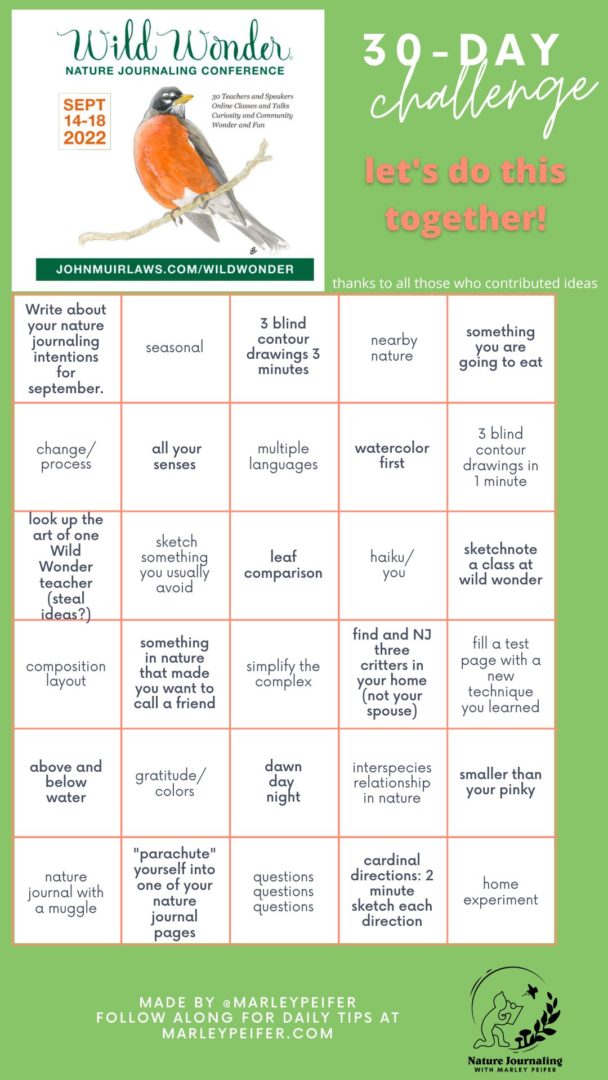
Before I press on, here’s an overview of the Wild Wonder nature journaling challenge:
In Marley’s words, the Wild Wonder nature journaling challenge “is meant to inspire people in the nature journal club and beyond to nature journal every day, and make the most out of the momentum created by the Wild Wonder nature journaling conference.”
Marley also outlines, “There are no dates on the prompts. This means if you really want to you can do them out of order.”
The overarching goals of the challenge are five-fold:
- Build consistency.
- Notice nearby nature.
- Increase the value of the conference by absorbing more information through daily warm-ups.
- Boost creativity by limiting options.
- Connect with the nature journaling community.
Win, win, win, win, and WIN!
My insights
So how did it go for yours truly? Spoiler alert: I completed the challenge...but I did so two weeks late. If you want to see all of my pages from Day 3 onward, you can find each of my pages on my Instagram page @brookenoticed. I’ll also share highlights here.
Below, I share my personal experience with Marley Peifer’s 30-day Wild Wonder nature journaling challenge broken out by the following themes:
- What I loved about the challenge.
- Which areas I struggled with most.
- What I learned about myself during the challenge.
- What I’d do differently.
Without further ado, buckle-up: there’s a lot to share!
What I loved about the challenge
The diversity of the prompts was fantastic.
Marley (and contributors) put together an excellent variety of prompts for this challenge. From prompts focused on asking lots of questions to a home experiment, the challenges helped me stretch beyond my typical subject matter and dig deeper on subjects I might not previously had stopped to consider.
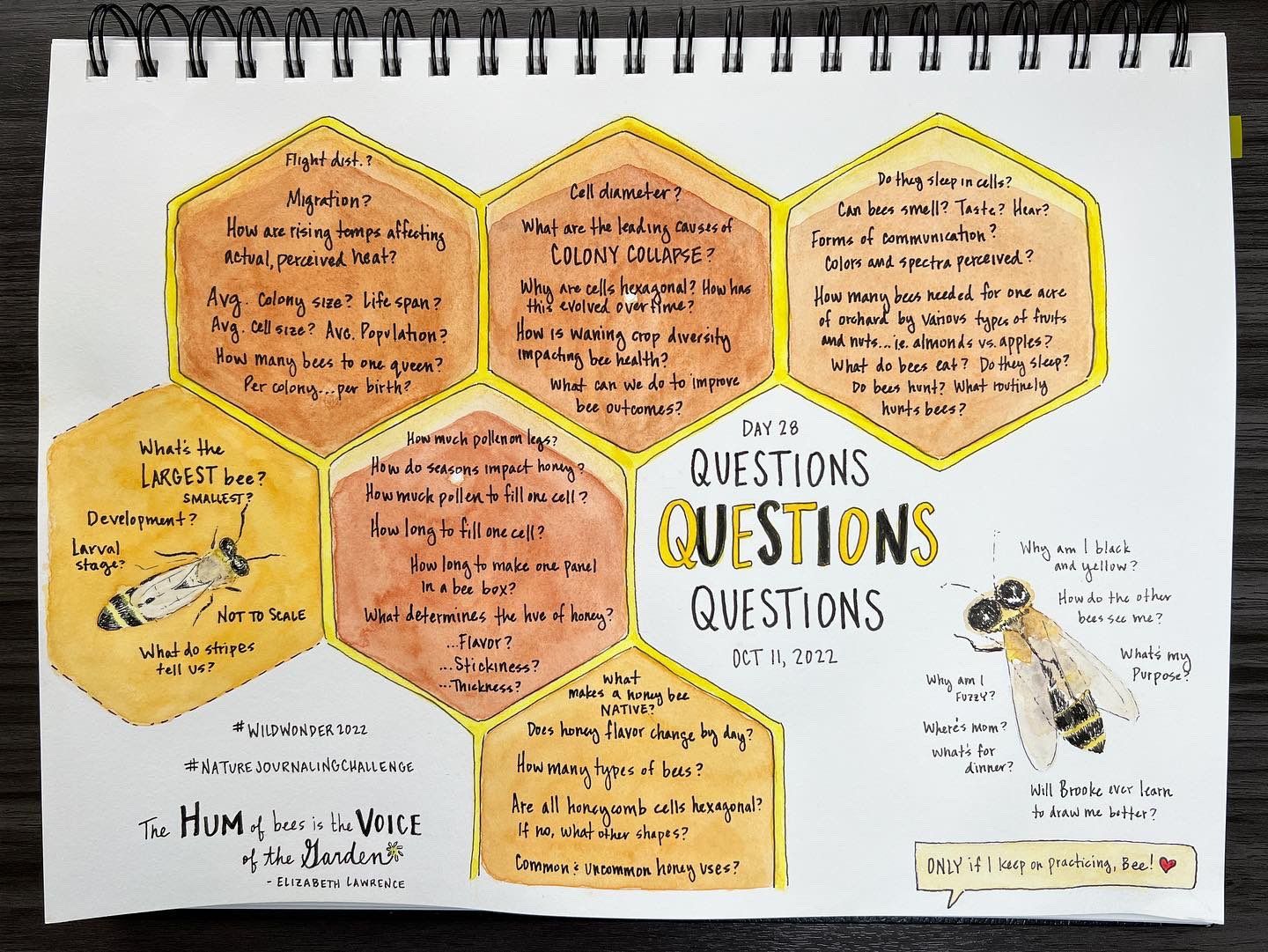
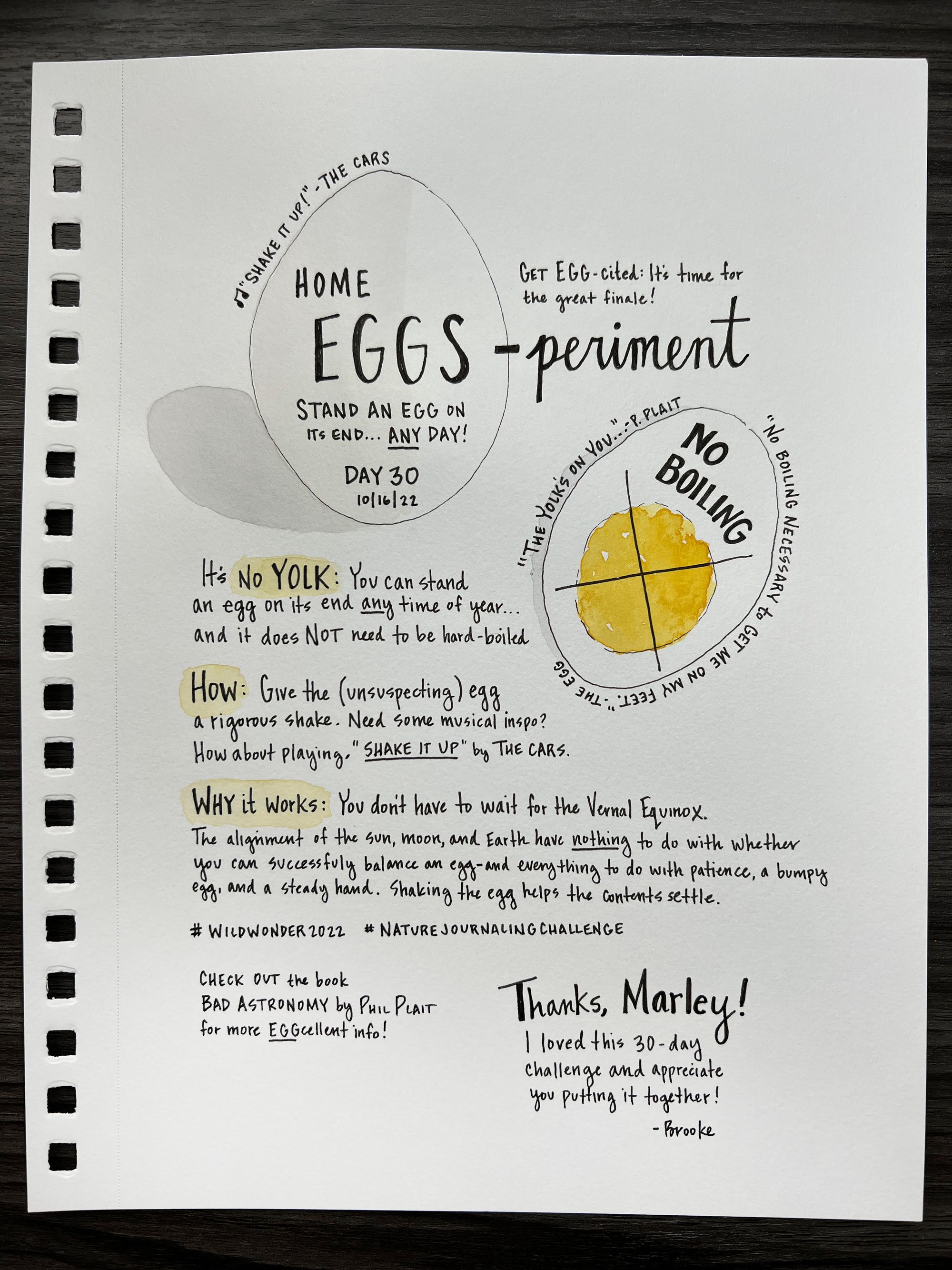
The challenge helped me become comfortable with injecting more of my personality into my nature journaling pages.
Before the challenge, I didn’t add much of my personal thoughts and personality beyond general observations into my public nature journal pages (though I do so in my private journal). By the end of this challenge, however, it became a standard practice for me to include my sense of humor (and my silly side) and more of “me” within the pages of my nature journal, deepening the overall joy of the experience.
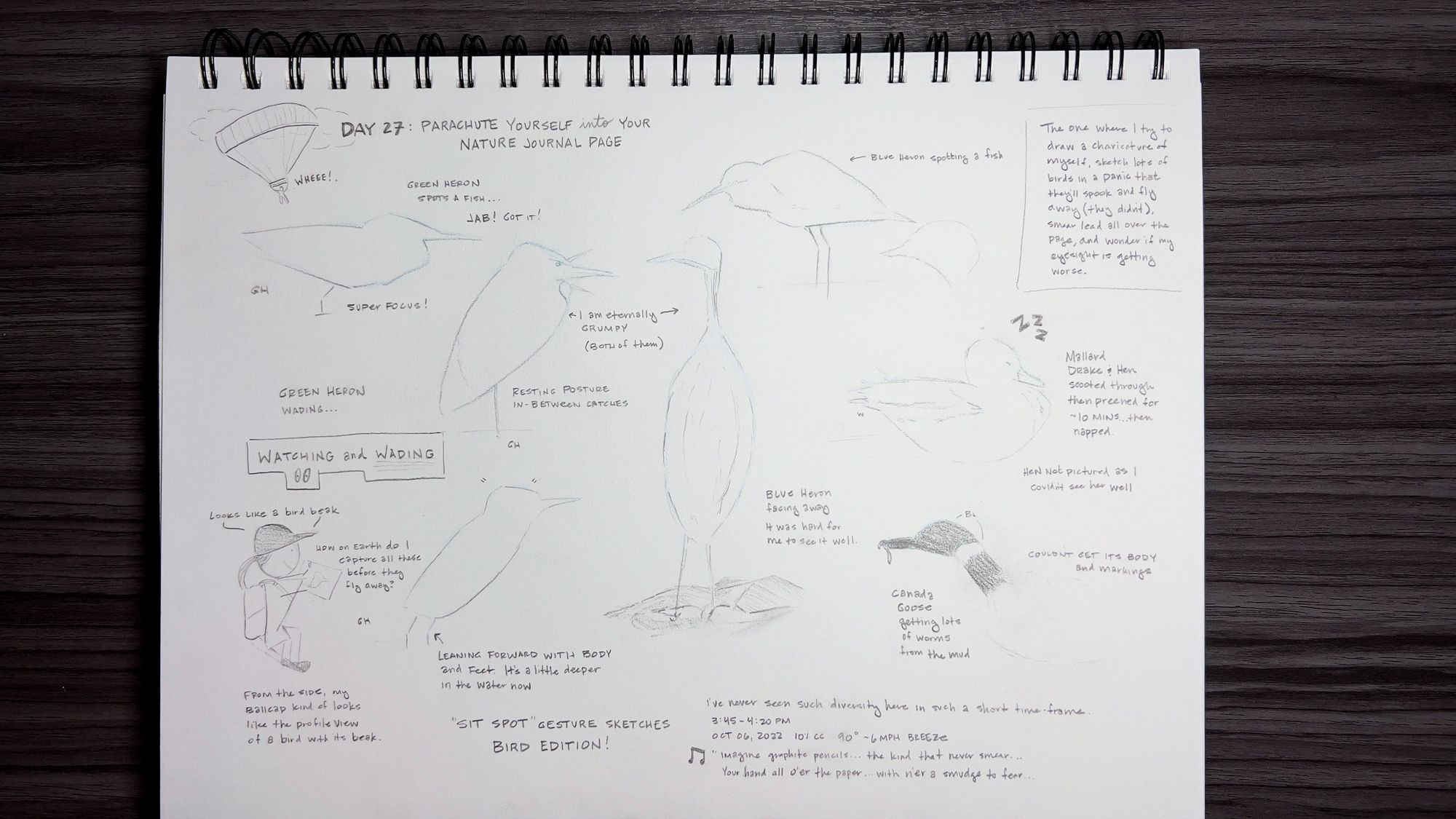
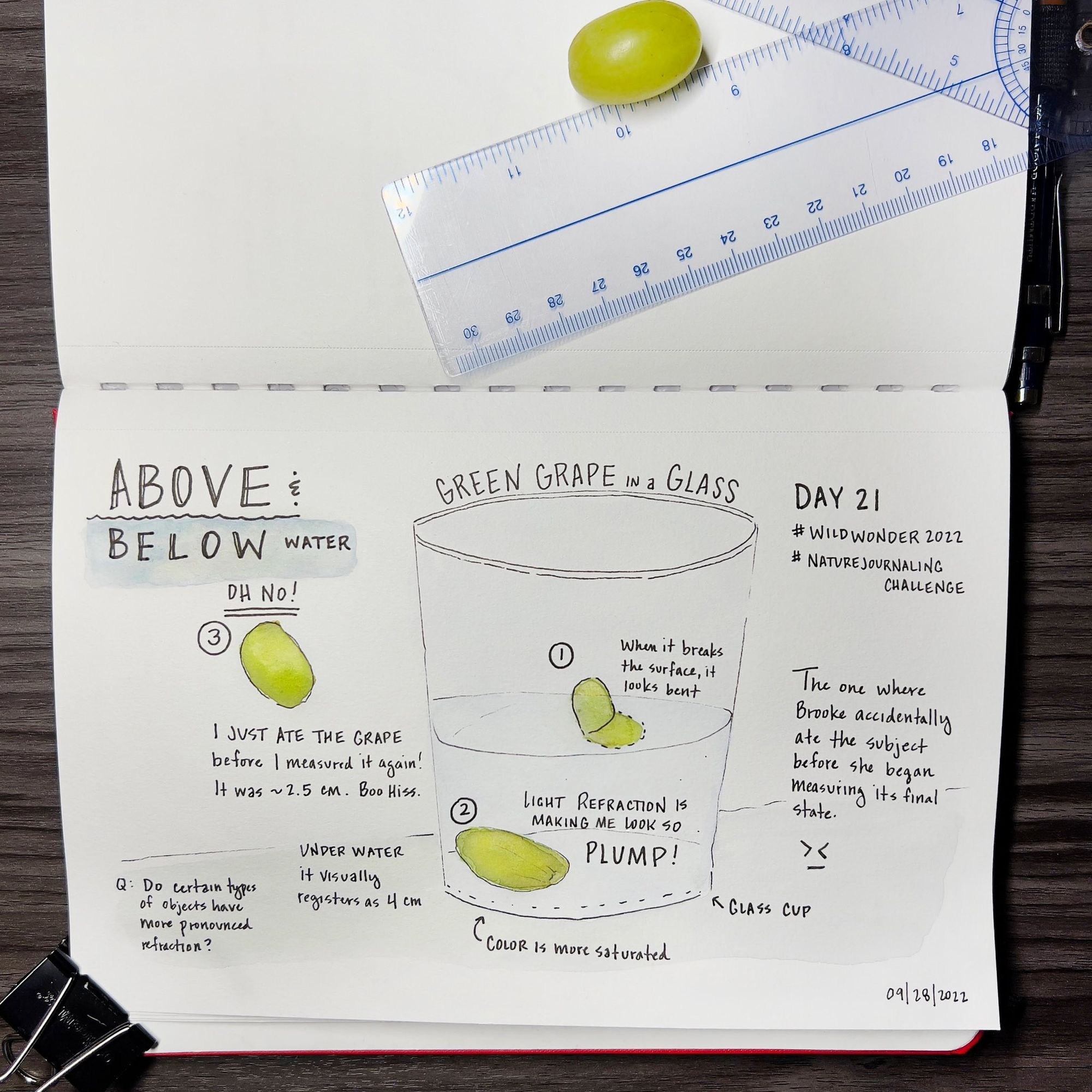
The challenge was a great way to interact with the nature journaling community.
I loved seeing what other folks within the nature journaling community were working on and how they interpreted the prompts. I got to peek into the journals of others and see their world through their own eyes. This was so special! Here’s a link to the Instagram hashtag feed for the challenge if you’d like to see the great ideas shared by others who participated in the challenge.
Which areas I struggled with most
I wasn’t prepared when I began, and this made it hard to keep up.
I started the challenge late – on Day 3 – and hadn’t first previewed (and thought through) the challenges ahead. My schedule had been abnormally erratic during the challenge month (September 2022), and this led to some late nights catching up with my journal entries well after the last session of each day’s Wild Wonder Nature Journaling Conference agenda.
Some prompts were difficult for me to execute during the time of day when I was available to do them.
While some of the prompts were designed to take very little time (i.e. 3 blind contour drawings in 3 minutes), others required more planning. One example of this was the prompt to find and nature journal three critters in your home (not counting your spouse, drats!).
I found myself struggling to locate critters in our home at night (when I typically journal) and had to delay this prompt to complete during an afternoon. Another prompt was to nature journal with a muggle, which required some scheduling coordination with my husband, Jason. We wanted to get outside together and draw but needed to do so during the day, which caused a bit of a delay.
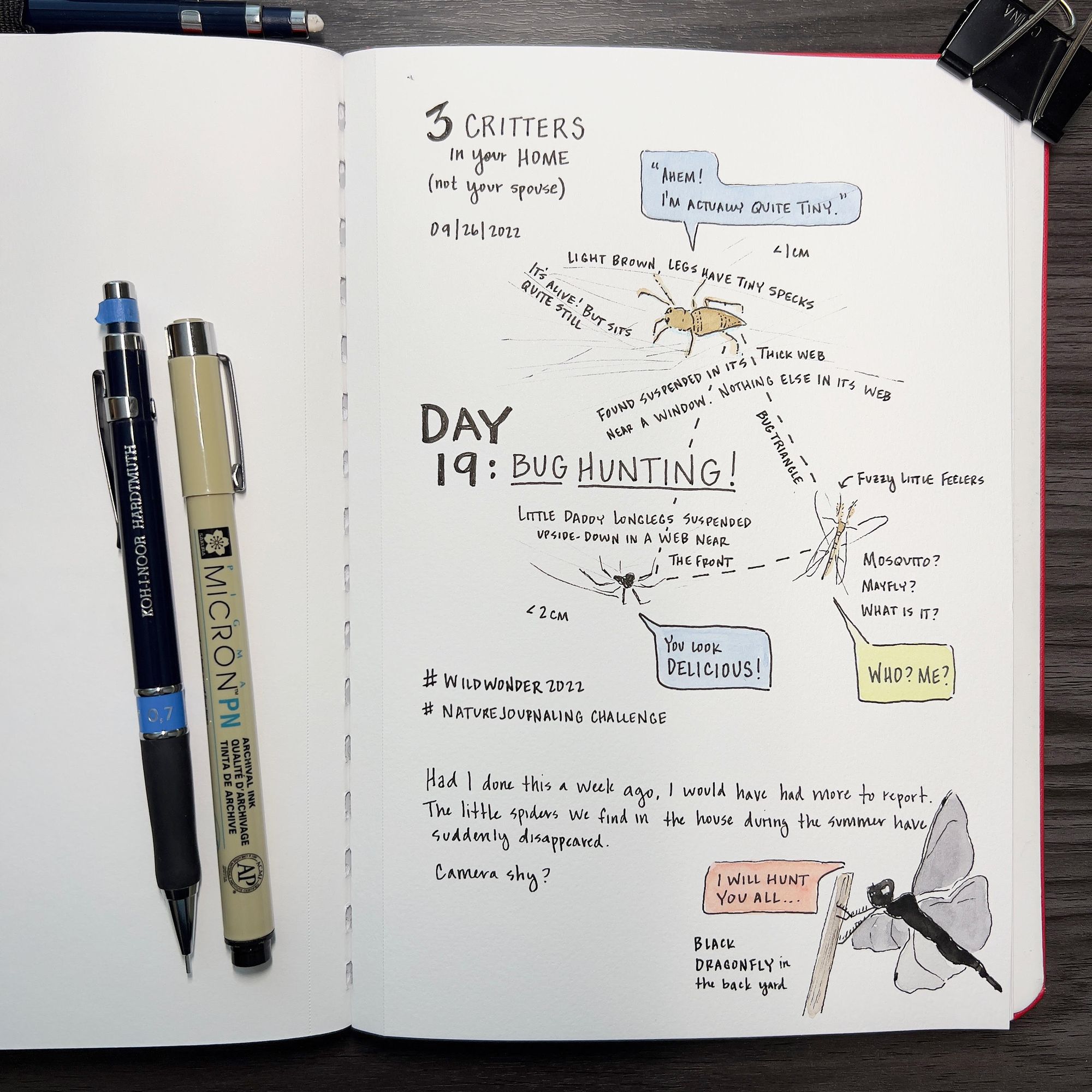
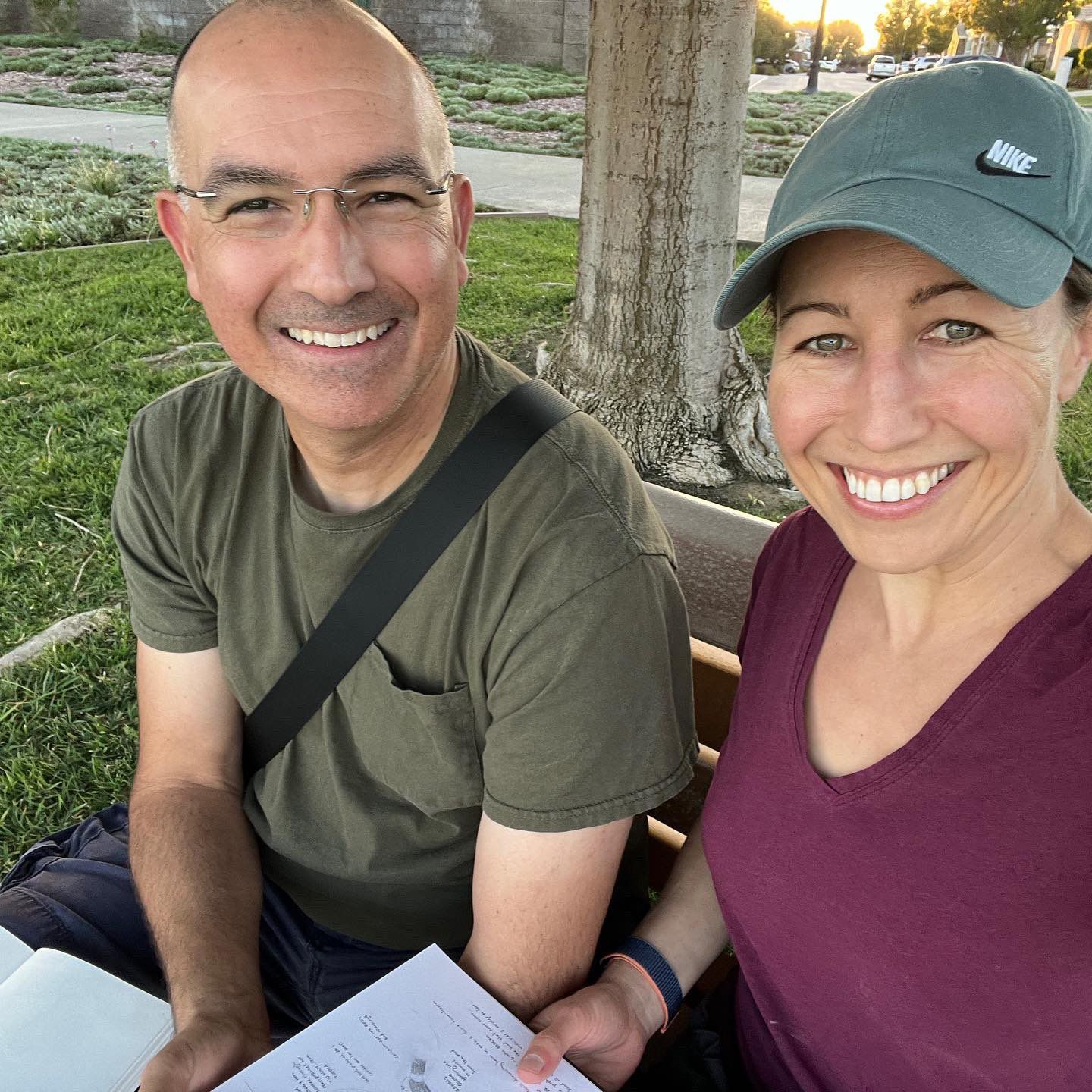
I thought because I nature journal regularly, this challenge wouldn’t require a lot of additional time.
I nature journal almost every day and had believed I could use the time I already allocate toward my journaling practice to complete the daily prompts instead. Boy was I ever wrong! Several of the prompts required much more time than I had anticipated and stretched beyond the time I had left in the day. This caused me to choose between stopping abruptly and “just finishing”, or carrying the prompt over to complete it the following day.
I shared a lot of work before I felt “ready” to share it. (This was good in some ways, though.)
Many nights I found myself wrapping up the day’s prompt feeling a bit deflated about how I had rendered a subject. The deadline was a good thing for me in certain ways, but also a challenge for me as a newer nature journaler sharing work which I wasn’t quite ready to release into the world.
It pushed me to make and move on, which is a good skill, but it also got in the way at times from me spending more time honing other skills I wanted to cultivate with deeper study. Luckily, I can always come back to any of these skills (and prompts), so, nothing was truly lost, but the challenge of stopping and sharing on a daily cadence was a struggle at times.
What I learned about myself during the challenge
Be precious about the process, don’t be precious about the product.
One of the prompts was to sketch something you usually avoid. For me, this is pikas! I hate to admit this, but my love for pikas is the very thing which keeps me from drawing them. Why? I’m afraid to draw them.
Yes, you read that right: I’m afraid to draw the adorable little North American Pika (aka Bunny Mouse) because they’re my favorite animal (I even have a print of one hanging near my desk). Isn’t that silly? I was afraid to draw something I care about because I felt like I wouldn’t be able to capture it well enough to represent it properly.
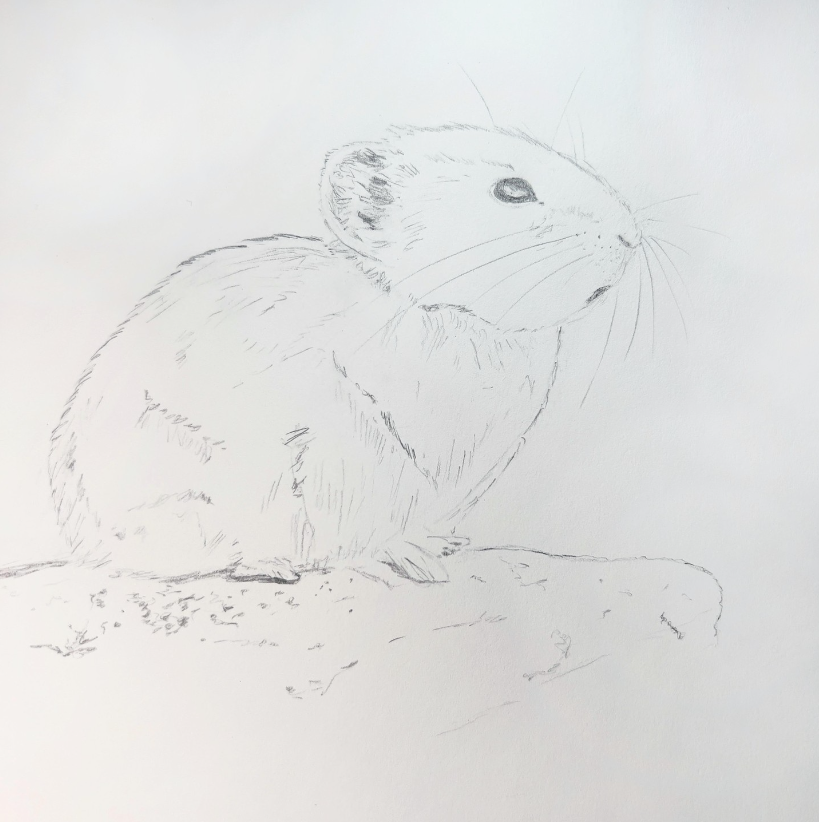
Think about how much this fear caused me to lose out on the enjoyment I could gain by observing pikas – or anything I care about for that matter – closely enough to draw them…and the practice I will gain in the process. This challenge helped me overcome that fear and become more comfortable drawing the things (and people) I love most so I can honor them even more.
There are no rules. Just do the thing.
I would worry about how certain prompts “should” be interpreted and sometimes get caught up with doing things the “right” way. I discovered there was no “right” way to do this challenge. The goal is to focus on the intention, come up with your best interpretation, and “do the thing”. That’s it. I was getting in my own way.
What I’d do differently
Plan ahead.
Because I retained the order of the prompts (with one exception), toward the end of the challenge, when I didn’t have the opportunity to complete certain prompts in time, I had to begin delaying some of the prompts to complete them at my own pace. If I participate in future art-based challenges (I think I will), I think planning ahead for the prompts and how (and when) I will complete them will be essential.
Despite my previous success with 30-day challenges, I learned right away that there is a lot more to an art challenge than to practicing something like a language each day. This challenge required a lot more than just showing up and putting in the practice. It required coming up with new material from distinct prompts each day, which was far more challenging for me.
Use the prompts as guides.
I’d like to use the framework of these prompts again, but without the stress of rushing through a subject when I really want to spend more time with that subject. Yes, this could keep me from achieving the daily goal on time, but when there’s a larger goal to improve a certain skill, it might not always be practical to cut yourself off from deeper learning simply because the timer goes off.
My advice to others: Make it work for you.
Conclusion
I enjoyed this challenge for many reasons. It helped me begin incorporating my own personality into the pages of my nature journal, it helped me connect to others in the nature journaling community, and it helped me approach subjects I had previously avoided (among other reasons).
I had a lot of work to show for myself at the end of this challenge and once I checked off the final prompt in my calendar, I sincerely felt proud that I had finished. You can see all of my pages from Day 3 onward here.
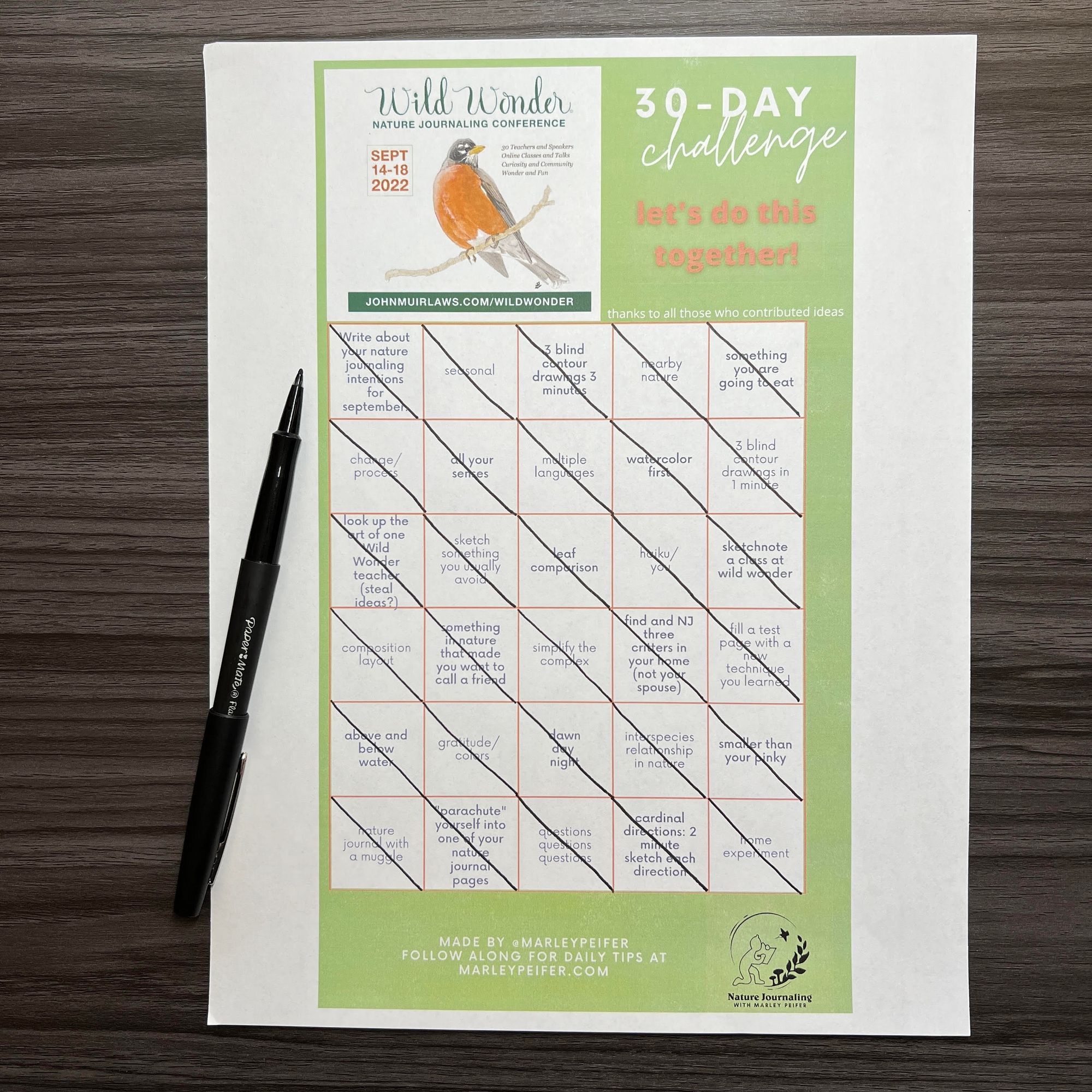
Dust off your intentions.
It’s important to remember why we set out to do something as it helps us stay on track when we begin to get lost or overwhelmed. For example, if I had stopped participating in the challenge simply because the challenge month ended before I completed all the prompts, I would have missed out on the overall goal of this nature journaling challenge, which was to notice and connect.
If you ever set out to participate in a challenge, it’s good to re-center and remember why you started to begin with. Write that intention down and place it where you’ll see it each day. Why did you start? Let that guide you to the end.
Much thanks to Marley Peifer and all the contributors for making this fantastic Wild Wonder nature journaling challenge available! The hashtag for this challenge is #wildwonder2022.
You can learn more about Marley and how he inspires people to see more via the practice of nature journaling at his website at https://marleypeifer.com.
Afterthoughts: Two things: 1. I’d love to know if you participated in this year’s challenge or a similar challenge (i.e. Birdtober, Inktober) and 2. What were your takeaways? What did you love? What would you do differently?

